iTunes 백업 위치를 변경하는 방법
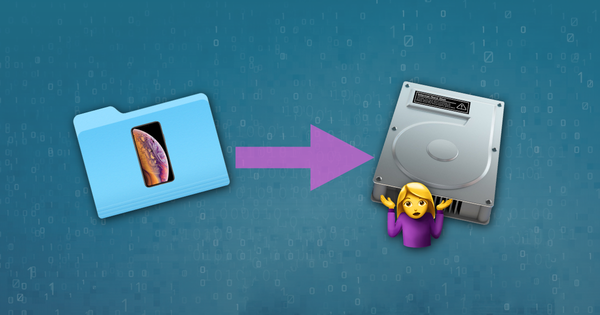
기본 iTunes 백업 위치는 PC 또는 Mac의 주 디스크로 설정되며 MacOS 10.15에서는 Finder에서 생성 된 iOS 백업이 같은 위치에 저장됩니다. 많은 사용자가 많은 iOS 장치에서 많은 양의 백업 또는 백업을 수행하므로 결과적으로 디스크 공간이 부족합니다.
iTunes가 보조 하드 디스크 나 외부 HDD 또는 NAS에 백업하도록 컴퓨터를 구성 할 수 있습니다.
간단히 말해서, 이것은 iTunes 백업 폴더를 원하는 위치에 대한 심볼릭 링크 로 대체함으로써 수행됩니다. 이것은 쉽게 되돌릴 수있는 변경이므로 기본 백업 위치를 원래 디렉토리로 복원 할 수 있습니다.
iTunes 백업 위치가 항상 사용할 수없는 볼륨으로 변경되면 새 위치를 사용할 수 없으면 iTunes 백업 프로세스가 실패합니다.
당신이 필요로하는 것
컴퓨터의 기본 iTunes 백업 위치를 변경하려면 다음이 필요합니다.
- PC 또는 Mac의 중급 역량
- 10 분
- 원하는 새 백업 위치 경로 이해
- MacOS 10.7 이상을 실행하는 Mac 또는 Windows Vista 이상을 실행하는 PC
- Reincubate 지원 팀이 도움을 줄 수 있으며이를 수행하는 방법에 대해 고객에게 조언 할 수 있습니다.
iTunes iOS 백업 폴더를 자동으로 변경하기
무료 버전의 iPhone Backup Extractor는 컴퓨터의 기본 iTunes 백업 위치를 자동으로 표시하여 변경하도록합니다.
- iPhone Backup Extractor를 다운로드하여 설치하십시오.
- 기본 메뉴에서
Preferences을 선택하십시오. - 고르다
Backups~로부터Preferences창문![백업 위치를 표시하는 "기본 설정"창 The "Preferences" pane showing backup locations]()
백업 위치를 표시하는 "기본 설정"창 -
Change단추를 클릭하여 iTunes 기본 백업 폴더 변경 프로세스를 시작하십시오.
Windows에서 iTunes iOS 백업 폴더 수동 변경
- Open the default Backup location in Explorer using the Windows Run command. Press
⊞ Win+Rand the Run window should appear. For Windows 7, 8 and Windows 10 iTunes Apple version, enter%APPDATA%\Apple Computer\MobileSyncand press⏎ Enter. For iTunes Microsoft Store version, enter\Users\[USERNAME]\Apple\MobileSync\Backup, where[USERNAME]is your Windows user name. - 열리는 탐색기 창에 "백업"이라는 폴더가 표시됩니다. 여기에는 이미 컴퓨터에있는 iTunes 백업이 포함됩니다. 백업 폴더의 위치를 변경하려면이 폴더의 이름을 변경하거나 이동하거나 삭제해야합니다. 예를 들어 이름을 "Backup (Old)"으로 변경할 수 있습니다.
- "백업"폴더의 이름이 변경되거나 이동되거나 삭제되면 원하는 백업 위치에 심볼릭 링크를 만들 수 있습니다. 이렇게하려면 명령 창이 열려 있어야합니다.
⇧ Shift를 누른 채로 최근에 열린MobileSyncExplorer 창에서 마우스 오른쪽 버튼을 클릭하면 "여기에 명령 창 열기"또는 "여기에 PowerShell 창 열기"옵션이있는 메뉴가 나타납니다. 그것을 클릭하십시오. - 다음 명령을 사용하십시오.
mklink /d Backup "[desired-new-backup-path]". 이 명령을 입력하면⏎ Enter를 누르면 변경이 완료됩니다. - Windows를 다시 시작하면 iTunes는 백업을 새 위치에 저장합니다.
macOS에서 iTunes iOS 백업 폴더를 수동으로 변경하기
- macOS 터미널 응용 프로그램을 실행하십시오.
Applications / Utilities / Terminal에서 Finder를 사용하여 찾을 수 있습니다. 또는 Spotlight를 사용하여⌘ Cmd+⏎ Enter를 누르기 전에 "Terminal"을 타이핑⏎ Enter. -
cd ~/Library/Application\ Support/MobileSync⏎ Enter한 다음⏎ Enter를 눌러 터미널에 기본 iTunes 백업 위치로 변경하도록 지시⏎ Enter. -
open .를 입력하여 Finder에서 현재 백업 폴더를open .⏎ Enter를 누르⏎ Enter. - Finder 창이 열리면 "백업"이라는 폴더가 나타납니다. 여기에는 이미 컴퓨터에있는 iTunes 백업이 포함됩니다. 백업 폴더의 위치를 변경하려면이 폴더의 이름을 변경하거나 이동하거나 삭제해야합니다. 예를 들어 이름을 "Backup (Old)"으로 변경할 수 있습니다.
- "백업"폴더의 이름이 변경되거나 이동되거나 삭제되면 원하는 백업 위치에 심볼릭 링크를 만들 수 있습니다.
ln -s [desired-new-backup-path] ~/Library/Application\ Support/MobileSync/Backup. 이 명령을 입력하면⏎ Enter를 누르면 변경이 완료됩니다. - Mac을 다시 시작하면 iTunes는 백업을 새 위치에 저장합니다.
iTunes 백업 폴더를 원래 위치로 복원하는 방법
위의 단계를 수행 한 후 변경 사항을 반영하려면 프로세스가 간단합니다.
- iTunes 백업 폴더로 이동하십시오 .
- 거기에 나타날
Backup심볼릭 링크를 삭제하십시오. - 원래
Backup폴더를 다시 끌어 와서 원래 이름과 일치해야하는 경우 이름을 바꿉니다.
다른 도전?
일부 사용자는 이미 iTunes 백업 폴더를 드래그하여 다른 위치로 이동 시켰습니다. 이제 iTunes가 백업을 볼 수 있도록 필요한 심볼릭 링크가 없습니다.
이 문제를 쉽게 해결할 수 있으며 두 가지 옵션이 있습니다.
원래 찾은 폴더로 폴더를 다시 드래그하십시오. 잊어 버린 경우
Backup이라고 부르며~/Library/Application Support/MobileSync있습니다.위의 지시 사항과 동일한 방법으로 가리키는 기호 링크를 작성하십시오. 이 단계에 있다면 터미널을 열고 다음을 수행해야합니다.
cd [location of the folder which now has "Backup" in it] ln -s Backup ~/Library/Application\ Support/MobileSync
그것만큼 간단해야합니다.
이것이 불가능한 상황이 있습니까?
이 기술은 모든 Mac에서 작동하지만 2000 년 이전에 만들어진 Windows PC에서는 작동하지 않습니다. Windows 2000이 출시되기 전에 Windows 는 기본적으로 FAT 형식의 파일 시스템을 사용했으며 심볼릭 링크를 만들 수 없었습니다. 그 이후로 만들어진 모든 Windows PC는 거의 확실하게 NTFS 형식의 디스크를 사용하게되며 이러한 기능은 상징적 인 링크를 지원합니다. FAT를 실행하고 링크를 만들려고하면이 오류가 발생할 수 있습니다 Local volumes are required to complete the operation.
다행히 Microsoft는 FAT에서 NTFS로 디스크를 업그레이드하는 방법 에 대한 지침을 제공합니다. 조금 더 기술적이지만, 가능합니다.
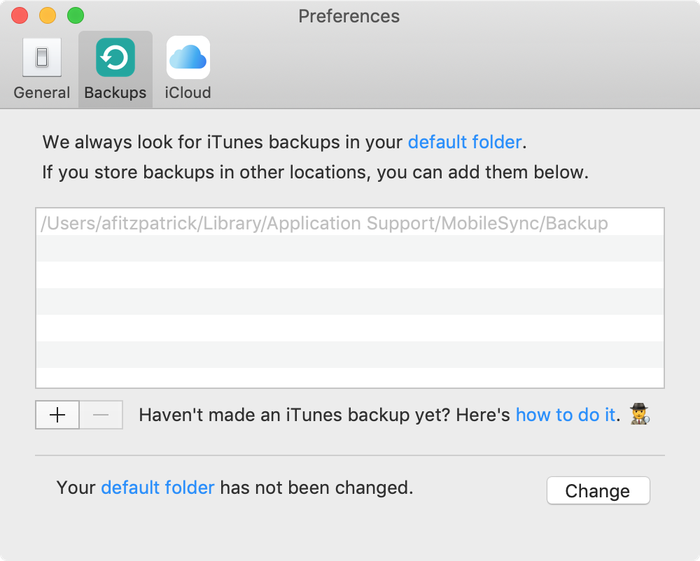
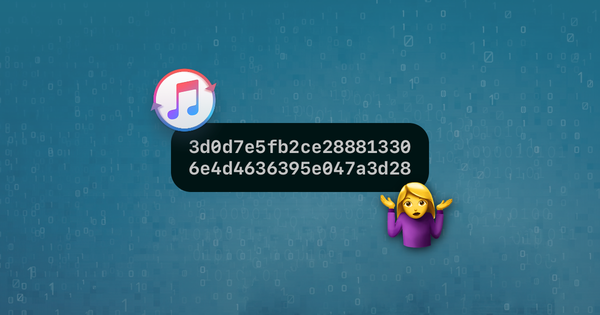

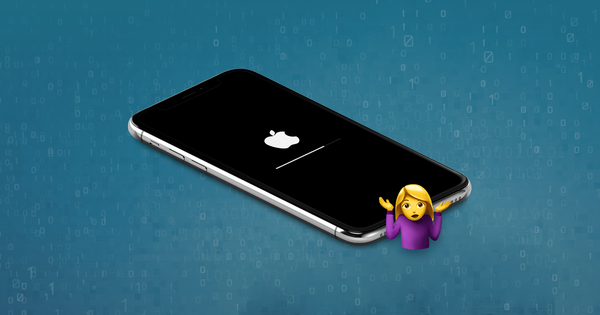
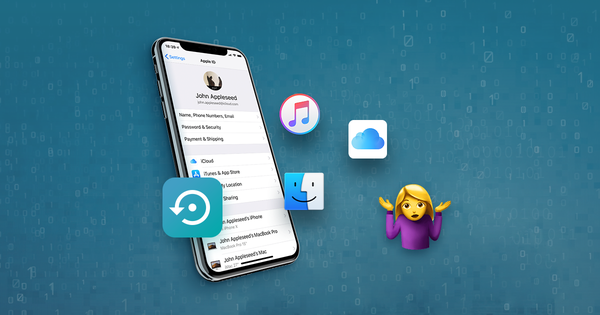

으로 Gael
Bonjour,
J'essaie tant bien que mal de déplacer ce Backup et de créer un lien symbolique. Cependant, la seule réponse que j'ai est: illegal option -- /
Je vous laisse le chemin que j'utilise et si une âme charitable veut bien m'aiguiller. Merci :)
ln -s/Volumes/VERBATIM\ HD/SAUVEGARDE\ IPHONE/ ~/Library/Application\ Support/MobileSync/Backup ln: illegal option -- / usage: ln [-Ffhinsv] source_file [target_file] ln [-Ffhinsv] source_file ... target_dir link source_file target_file
답장하다: Reincubate Support
Salut Gael, merci d'avoir écrit! Le problème ici est l'espace ("") entre votre chemin et les barres obliques.
Il doit s'agir de
ln -s /Volumes/VERBATIM\ HD/SAUVEGARDE\ IPHONE/ ~ /Library/Application\ Support/MobileSync/Backup, et non deln -s / Volumes / VERBATIM \ HD / SAUVEGARDE \ IPHONE / ~ / Library / Application \ Support / MobileSync / BackupFaites-nous savoir si vous avez besoin d'aide! 🙂
으로 Alex
Backing up to remote Synology server (not local). All you need:
thanks
으로 Samuel Kwok
Exactly what I needed. I don't want to store on my MacBook as it takes 200GB. This allows me to move to a Time Capsule. I don't use Time Machine but I use Time Capsule as a network drive and another copy of the whole Time Capsule to another network drive.
답장하다: Reincubate Support
Glad it helped!
으로 Rick Galloway
I've got the symbolic link created, but my iPhone back up still goes to the original C: drive location. When I look on my k: drive, I do not see the symbolic link file subdirectory even though it said it was created.
답장하다: Reincubate Support
Hi Rick: the symlink should be in your C: drive, in
MobileSync, and calledBackups. It'd be that that points to the K: drive in your case. If you get stuck, why not use the functionality in iPhone Backup Extractor? It can do it for you, and it's in the free edition.으로 Colleen Gordon
How do I figure out the my desired new backup location path? I want to use an external drive.
답장하다: Reincubate Support
Hi Colleen, thanks for commenting. If you use the functionality in iPhone Backup Extractor to change location, you can make the change simply by browsing to the folder you want. That might be easier! 🙂
으로 Mike L.
A fix to the insufficient permissions error--
Since I got the permissions insufficient in both cmd and powershell. First you search
cmdand then right click the command prompt app and run as admin. Navigate to the directory using the cd command ex.(cd c:\users\youruser\apple\mobilesync). once in the directory you can use the (mklink /d backup [new directory]) command listed in the article. That worked for me.As a side note, when using the cd command to navigate remember that you will likely have to put any folders with a space in the name inside quotation marks ex.(
cd c:\users\"this user"\apple\mobilesync). hopefully this helps some avoid the hassle of having to figure out this process if you get that persistent insufficient permissions response.으로 Aaron
Hello Aidan!
So I'm trying to change the backup path on Windows, and of course get the "insufficient privilege" error in the regular Powershell. So I ran it as administrator by typing it in the search bar and it said it created the symbolic link to the location, so I restarted my PC & tried updating iOs but the backup still went through to the original location (my hard drive, while I wanna change it to an external one simply 'cause I don't have enough space left on the former, lol).
So I guess my question is: how do I run Powershell in the MobileSync window as admin/how do I get the one I open through the search bar as admin to go to the MobileSync folder location so I can properly create the symbolic link & switch it up? :/
P.S. I did skip step one if I'm being honest, but only did so 'cause I already found the location manually, then proceeded to follow the instructions w/ renaming the folder, etc. Might this be the reason why it's not working? If so, shall I re-rename it to its original "Backup" name and try it again with the 1st step? I doubt it since I can't get the Powershell to go to the MobileSync location while I run it as admin to begin with/can't change it without running it as admin in the aforementioned window...Then again what do I know, lol.
P.P.S. Does the admin-run Powershell not need the MobileSync path to be put in and can successfully render the switcheroo by typing the featured command right after the "system32" path? If so, what seems to be the problem?
I was hoping to update my iOS tonight, and am getting more & more frustrated as we speak. Sorry for the post being so jumbled, hope all's clear. Thanks for the help!
답장하다: Reincubate Support
Hi Aaron, thanks for the comment.
Yes, if you skipped step 1 your Powershell will be looking in the wrong folder, so it won't have created the symbolic link in the right place.
If you've already got a Powershell or command window open, you can make it change folder with this command:
cd %APPDATA%\Apple Computer\MobileSync(If it's looking at the wrong drive, you'll have to change drive by typing
C:.)We've reached out to you directly to help, but if anyone else runs into the same problem, we'd recommend undoing the steps you took, starting over, and making sure to include the first step. 🙂
으로 Mohamed
I tried it, the following error popped up .. Plz advise
답장하다: Reincubate Support
Hi Mohamed, it looks like you're using PowerShell to run the command. If that's the case, you must prefix you command with
cmd /c, so it's likecmd /c mklink, etc.으로 Sean
I'm trying to do this on Mac OS 10.14.6 (Mohave), but when I try Step 5, I receive a "Operation Not Permitted" message. Any ideas...?
답장하다: Reincubate Support
Hi Sean, thanks for commenting. On macOS Mojave and newer, you'll need to grant "Full Disk Access" to your Terminal in order to make the change. There's a how-to on how to do this for iPhone Backup Extractor here, I hope that helps!
으로 Max
Thank you for the article. Here are a few notes to help somebody.
CD(include space). Example:CD C:\Users\Username (change this)\AppData\Roaming\Apple Computer\MobileSyncmklink /d Backup "L:\Users\XYZ"으로 Joe
I'm still having trouble with permissions, when I open up powershell in admin I get a command line PS
C:\Windows\System32>I don't seem to be able to open it in admin mode from the file path of the itunes back up.답장하다: Reincubate Support
Hey Joe, you can change directory using the
cdcommand. Try this:cd %APPDATA%\Apple Computer\MobileSync으로 Jess
Thanks for this assistance! I too got stuck on the "you do not have sufficient privilege to perform this operation." I then followed your advice in the comments above and ran Powershell as an administrator, but the Powershell window that opens from the MobileSync folder doesn't seem to recognize that and keeps giving me the same message. What do I do from here? Thanks!
답장하다: Reincubate Support
Hey Jess, thanks for writing. It's the same privilege error you're getting? If you drop us a note I'm sure we can guide you through it.
으로 Андрей
У меня выдает ошибку в PowerShell mklink : Имя "mklink" не распознано как имя командлета, функции, файла сценария или выполняемой программы. Проверьте правильность написания имени, а также наличие и правильность пути, после чего повторите попытку. строка:1 знак:1 + mklink /d Backup "[desired-new-backup-path]" + ~~~~~~ + CategoryInfo : ObjectNotFound: (mklink:String) [], CommandNotFoundException + FullyQualifiedErrorId : CommandNotFoundException
답장하다: Reincubate Support
Привет Андрей, попробуй
cmd /c mklinkи так далее 🙂으로 Hogan
Hi Aidan, Thanks for your amazing instructions!
I have run them on my Mac but got an error saying "Library/Application Support/MobileSync/Backup: No such file or directory". I guess this happened because I have renamed the old "Backup" file. Actually, it also confuses me a lot when u say "Once the 'Backup' folder has been renamed.../Backup", as the original "Backup" file doesn't exist anymore(right?)
Looking forward to your further clarification. Thanks :)
답장하다: Reincubate Support
Hi Hogan, thanks for your kind words. That second "Backup" reference is assuming you didn't change the folder's name, but simply moved it elsewhere. If you did rename it, you'd want to change it in that command. I hope this is clear. If it's not, do drop us a note. (Or use iPhone Backup Extractor to move it for you, as the free version can automate this process.)
으로 Luna
hi i get this message when i try and finalize the path: "You do not have sufficient privilege to perform this operation." It's my computer and i understand it has to do with admin rights but how do i run windows powershell as admin?
답장하다: Reincubate Support
Hey Luna! No problem: on Windows, you'd click on the "Start" button, then type "powershell". You'll see the menu search eventually shows you the PowerShell icon. If you right-click on that, you'll see there's a "Run as Administrator" option. Good luck -- I've asked our support team to drop you an email directly in case you need further help. 🙂
으로 Cedric koh
If I were to delete the backup symlink in the itunes MobileSync folder,how will that affect the backup folder i used for the symlink in my other drive? Will the files inside the backup folder in my other drive be unusable?
답장하다: Reincubate Support
Hi, thanks for stopping by. Removing the symlink is safe: it will effectively just remove the pointer to the backup folder on your other drive. The files will still be usable, but iTunes (or Finder) won't know where to look for them.
You could then move the files back to where they were originally -- or create another symlink.
으로 PBHRider
Great work. How do you come up with this stuff? Did the manual method on Windows 10 using the command prompt with admin privilges and am now backing up my iphones etc to my NAS drive. Saving about 4Gb on my SSD on my laptop. Thank you.
답장하다: Reincubate Support
Really pleased it worked out for you. 👍 Don't be a stranger if you need help in future!
으로 Michael Milbourn
You do not have sufficient privilege to perform this operation. It's my computer, who is not letting me change things on it?
답장하다: Reincubate Support
Michael -- if you're on a Windows machine, trying running these commands in a Windows Command that has been launched with "Run as Administrator".
으로 Lucas
Works like a charm! I followed the instructions for manually changing the iTunes iOS backup folder on Windows (through PowerShell). It is exactly what I was looking for to free up space on my C: drive. Thank you so much Aidan!
답장하다: Reincubate Support
Our pleasure, we're glad it helped!
으로 Brad
Thank you for this
으로 kalveer kaur lehal
Hi thanks for this. I get an error saying:
Local volumes are required to complete the operation.
How can I fix this please? Thanks
답장하다: Reincubate Support
Hi Kalveer, this message suggests your filesystem is FAT-based. I've updated the article to include a mention of why it's not possible to create links on FAT. I've also included a link to instructions on upgrading to NTFS. Good luck!
으로 Greg
Awesome instructions, thank you! I think there is a typo on step 5 for Mac. The command line is written as
-s [desired-new-backup-path] ~/Library/Application\ Support/MobileSync/Backupbut the folder "Support/MobileSync/Backup" doesn't exist since we moved/deleted it. I had to change it to "Support/MobileSync" and then the folder I linked to was called "Backup".답장하다: Reincubate Support
Howdy Greg! Having "Backup" in the path should be correct, as it'll ensure the link that gets created is called "Backup". Makes sense?
We've got something up our sleeves to make this a little easier in future. Keep an eye on the release notes. 😏
으로 salma
hi ! i did all the steps but i kinda don't get where is the new backup location now ?
답장하다: Reincubate Support
Hi Salma -- the new location will be the folder you created the link to!
으로 Clint
Firstly Aidan - thank you very much for this.
My main drive is a (relatively) small SSD and I would like to be able to save my iTunes backups to the NAS setup instead. You have provided a fantastic workaround!
One thing I wasn't sure about was at step 3 (Windows) - when you right-click (to choose "Open PowerShell window here"), is that in the Explorer window of the now renamed Backup folder? Eg, in the now-named "BackupOld" folder window?
답장하다: Reincubate Support
Hi Clint, thanks for your kind words. I've updated the article to make it crystal clear: the window you right-click in is the one you opened at
%APPDATA%\Apple Computer\MobileSync.으로 Hugues Larouche
And how do you reverse it on Windows PC ? Thx
답장하다: Reincubate Support
Hugues, thanks for your comment. I've updated the article to explain that!
으로 Fred Brunson
Aidan, I don't understand your instructions in How to change the iTunes backup location. What do you mean by prefix your command in PowerShell with cmd /c, like mklink /J Backup "[desired-new-backup-path]".
답장하다: Reincubate Support
Hey Fred, thanks for asking. Just like this:
I'll tweak the explanatory text to make it clearer.